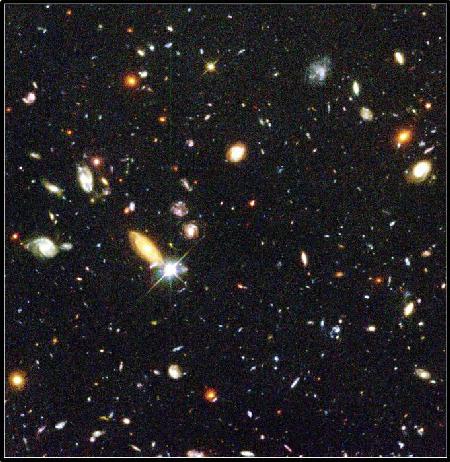
A "deep field" picture from the Hubble Telescope. Each splotch is a galaxy.
As astronomers began to study the night sky with telescopes, they found it ever harder to explain what they were seeing. What they had assumed were clouds of dust turned out to be whole new galaxies like our own Milky Way. And there are a lot of them: current estimates put the number of galaxies in the observable universe at 170 billion[1].
This is a very large number, but it is not infinite. In fact it cannot be infinite, because of the following paradox[2]: If the universe were truly infinite, then you could pick any point in the sky and, going out along that line of sight, you would eventually come to a star. If there is a star at every point in the night sky, then the sky should be completely bright. This isn't the case, so the observable universe must in some sense be finite.
How can we explain this? And in what sense is the observable universe finite?
The number of galaxies in the observable universe is taken from Wikipedia: Galaxy. For reasons that will be explained in the next few slides, this number is not the same as the total number in the universe; we don't even have a handle on how big that number might be.
This is Olbers' paradox. For this paradox to work we must also assume that matter is regularly distributed throughout the universe.
It is possible that light from far-away stars could be absorbed by dust or other intermediate material so that we can't see them, but this can also be excluded because we would see the radiation from this material.
Author: Tom Brown
Copyright: public domain
Date last modified: 11th Oct 2011
Peer-review status: Not yet peer-reviewed
Hubble Deep Field: source: NASA, copyright: public domain?